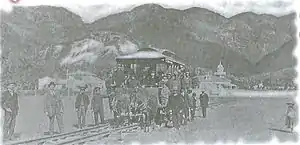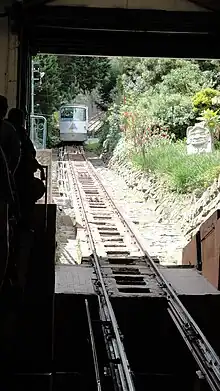Trams in Bogotá
Title: A Testament to Sustainable Urban Transportation
Trams have long been recognized as a viable means of transportation in urban landscapes, offering a sustainable solution to the ever-increasing challenges of congestion and pollution. Bogotá, the capital city of Colombia, embarked on a transformative journey to reintroduce trams into its transportation network, marking a significant milestone in the pursuit of sustainable urban mobility. This essay sheds light on the history, benefits, and future prospects of trams in Bogotá.
Trams first made their appearance in Bogotá during the late 19th century, becoming a symbol of progress and modernity. These elegant vehicles glided through the city streets, providing efficient and comfortable transportation to its residents.
However, as the years passed, trams gradually fell out of favor, giving way to other modes of transportation, such as buses and private vehicles. With the growing urbanization in the latter half of the 20th century, Bogotá faced heavier traffic congestion and increased pollution levels. In response, the city initiated efforts to bring back trams, recognizing their potential to alleviate these issues.
The reintroduction of trams in Bogotá holds numerous benefits for the city and its residents. Firstly, trams provide a sustainable transportation option, reducing dependency on fossil fuels and lowering carbon emissions. This contributes significantly to the city's efforts to combat climate change and create a greener, healthier environment.
Secondly, trams offer an efficient means of transportation, reducing travel times for residents traveling within the city. Their designated tracks and right-of-way ensure smooth and uninterrupted flow, bypassing vehicle congestion. This not only improves the overall quality of transportation but also enhances accessibility and connectivity between neighborhoods.
Furthermore, trams enhance the aesthetic appeal of Bogotá's urban landscape. With their sleek design and modern features, trams add a touch of charm and elegance to the city's streets. This revitalization of public space encourages urban renewal, attracting more pedestrians to explore and engage with their surroundings.
The successful implementation of trams in Bogotá paves the way for future expansion and integration into the city's transportation network. As more sections of the city become connected through tram routes, the reach and convenience of this mode of transportation will continue to expand.
The vision for the future of trams in Bogotá includes extending their network to cover key areas and neighborhoods that are currently underserved by other forms of public transportation. This will contribute to further reducing traffic congestion and providing the citizens with a reliable and sustainable travel option.
Additionally, trams can act as catalysts for urban development and economic growth. The increased connectivity brought by trams encourages commercial activities along the tram routes, promoting business growth and improving the overall vitality of the city.
The revival of trams in Bogotá represents a significant step towards achieving sustainable urban transportation. Through their environmental benefits, improved efficiency, and positive impact on the urban landscape, trams contribute to a more livable and vibrant city. With further expansion and integration, the future of trams in Bogotá holds enormous potential for transforming the city's transportation ecosystem.
1. Herrera, V., & Bethancourt, C. L. (2018). Implementing tramways in Bogotá: insights into interinstitutional coordination and public opinion. Journal of Transport Geography, 68, 10-18.
2. Echeverri-Jaramillo, J., & Sarmiento, O. L. (2020). Towards equitable transportation in cities: Case study analysis of the Bogotá, Medellín, and Santiago de Chile tramways. Sustainability, 12(5), 2077-2102/

Trams in Bogotá were first inaugurated on December 24, 1884 with the first tramway pulled by mules, covering the route from Plaza de Bolívar to San Diego, in Bogotá, Colombia. In 1892, a tramline linking Plaza de Bolívar and Estación de la Sabana started operating. The original trams ran over wooden rails but since such tramways easily derailed, steel rails imported from England were later installed. In 1894, a tramcar ran on the Estación de la Sabana to Chapinero line every twenty minutes.
In 1910, the system was electrified. The electric system was expanded and operated four lines.
The riots of April 1948, known as Bogotazo, caused the destruction of several tram vehicles. Bogotá's tramway provided services up to 1951 when all trams were replaced by trolleybuses on June 30, 1951.
Aerial tramway
The aerial tramway or cable car to Monserrate mountain began its construction on August 13, 1953 and was inaugurated on September 27, 1955; in a bicable modality with two cabins that transport 40 passengers each. It was built in 1955, and has two cabins each for 40 passengers. The 880 m (2,887 ft) journey is traveled in 7 minutes, traveling over the downtown of the city. At the terminus on Monserrate mountain, there is a church, a restaurant and other smaller tourist attractions.
Funicular

The Funicular to Monserrate is a tramway used for going from the city level (2,962 m or 9,718 ft above sea level) to the top of the Hill of Monserrate (3152 m). The 1,000 mm (3 ft 3+3⁄8 in)[1] gauge funicular transports daily the inhabitants of the capital and tourists; it was finished in 1928 and inaugurated officially on August 18, 1929. Since that time, this small train has slowly ascended towards the peak of Monserrate, gradually allowing its passengers the contemplation of nature and landscape that is being left behind as they reach the 3,152 meters or 10,341 ft above sea level, where its upper station lies.
In December 2003, the funicular initiated a new phase with a more modern design in its cars, that now open their doors to the sky with a crystal ceiling, so that nobody can lose a single detail of the forests that surround the city, the beautiful panoramic view and beautiful sunsets. In its trip of only 4 minutes, the cable car rises with its big windows on its sides, offering a great view of the hill that makes contrast with the beautiful panoramic of the city. The dense vegetation of the high trees tops leave us a sensation of direct bonding between earth and sky.
Proposed modern tram to airport
63 km airport tram under study. Vossloh, Torres Cámara and Conconcreto, which envisages that the 2bn pesos scheme could be funded through an 82:18 public-private partnership. Route: Sabana Facatativá to Bosa via El Dorado International Airport.[2]
See also
References
- The Funicular up Monserrate in Bogotá
- "Bogotá tram-train study". Railway Gazette International. July 1, 2014. Retrieved 2014-08-02.
External links
- The Tramways of Bogota – It presents 22 photographs of the tramway.
- The Funicular up Monserrate in Bogotá – Photographs of the Aerial tramway and Funicular
- Data about the funicular
- Time line - Public transport service in Bogotá - 22 pages, photographs and videos.